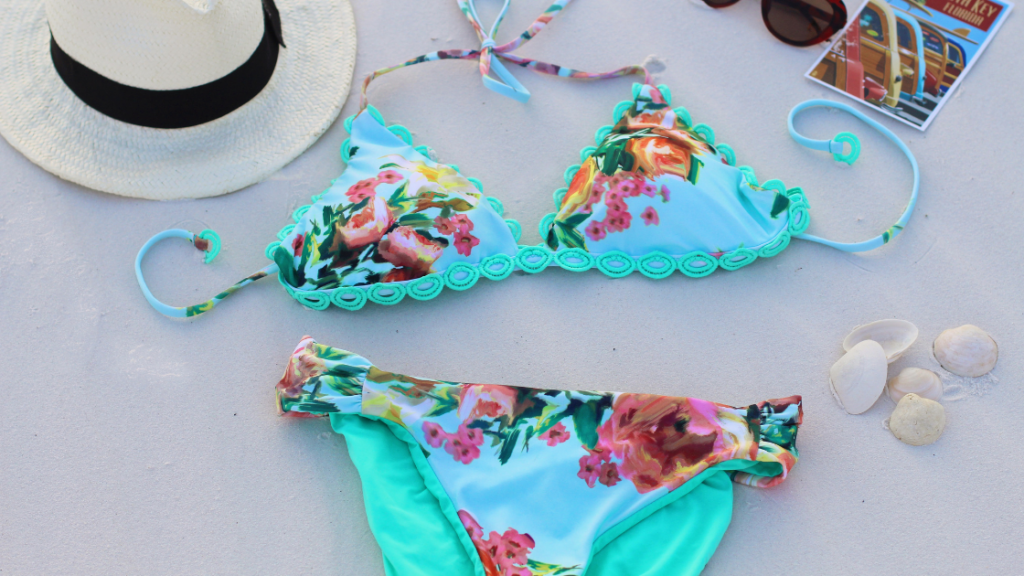Learning how to safely wash a swimsuit is about as important as learning how to actually swim. Swimsuits are constantly exposed to elements like chemicals from pool treatment, sunscreen and suntan lotion, sand and saltwater from the beach, high temperatures and UV light from the sun and sweat.
Add these to regular wear and tear from your activities, and maintenance poses a challenge.
Fortunately, learning how to wash a swimsuit can keep all this in check. Let’s understand the special needs of the swimsuit fabric and how we can incorporate them into our wash cycle to enable them to last the season.
How to Wash a Swimsuit Correctly
Thankfully, safely washing a swimsuit is quite simple. Here are some practical tips on how to do so:
Read and Observe Care Instructions for Washing Swimsuits
The manufacturer gives essential information, including whether the suit can be machine washed and the temperatures it can withstand. This is useful in regulating your laundry conditions.
It’s important to note that chlorine resistance rating doesn’t give the green light to use harsh chemicals like chlorine for washing. It only means the costume has been treated to resist damage from chlorinated water. You still have to wash off the chlorine after dipping in a treated pool because it will eventually degrade the fabric.
How Often Should You Wash a Swimsuit?
Wash the swimsuit after each use, even when you don’t take a dip. The chemicals in sunscreens can leave stains behind or damage the swimsuit fabric due to their oily residues and reactions with minerals in hard water. Sunscreen stains should be treated at the earliest opportunity because the longer they stay, the harder they are to remove and the more they degrade the fabric.
Pools and hot tubs are also treated with chlorine, which can harm the swimsuits’ elasticity and cause the fabric to change color. This degradation will be especially evident on a white bathing suit which tends to turn yellow as chlorine exposes synthetic fibers of their yellow inner core by stripping off their elastic outer white fibers.
Swimwear doesn’t need to be deep-washed every time but should be rinsed thoroughly with cold water to remove the chlorine and debris if they were not exposed to other elements. Let the suit soak in the cold water for up to 30 minutes if you have time.
This ensures it loosens sand, salt, body oils, and any chemicals that might damage their fabric. Don’t soak them for too long; above eight hours might loosen their fabric instead.
Washing after the third to fifth wear should suffice if they are always rinsed and dried well.
Handle Swimsuits with Care
Swimsuit fabric is designed to be light, fast-drying, water-repellent, and stretchy. Swimsuit fabric is often treated to reduce drag against the water. They will typically be made of elastane, spandex, polyester, nylon, or composites of these materials.
This means they are delicate and vulnerable to snagging, stretching, and tearing from the washer’s twisting, sagging, and pulling motions.
Consequently, hand washing is recommended for swimsuits whenever possible. Always start by rinsing and soaking the suit in cool water after wear. However, plain water will not always remove chlorine or salt. Drain this water, refill the sink and add a teaspoon of a gentle detergent for a single swimsuit.
Pay attention to stained areas because they are easier to remove when spotted early. Apply the mild soap or detergent to a nylon brush with soft bristles or an old toothbrush and scrub the problem areas gently. Turn the swimsuit inside out, repeat the process and submerge the suit in the solution. Consider a non-toxic stain remover, such as the EnviroKlenz Laundry Detergent.

Swish the costume in the solution several times. Remove it and rinse it well in clean water. Remove the excess water by gently squeezing the fabric before air drying it. Avoid wringing the swimsuit, as this stretches the fabric.
Swimming suits should be air-dried in dry environments with adequate air circulation and no exposure to direct sunlight. The sun’s UV rays cause their colors to fade and break down their fibers.
The Mesh Bag
Machine washing should be the last resort for swimwear laundry. However, if you have to throw the swimsuit in the washer, confirm whether their fabric is washer friendly. Treat the stained areas inside and outside of the garments with a mild laundry detergent before proceeding.
Wash them in a mesh laundry bag on a delicate low-heat cycle. The durable yet flexible meshing will protect them from heat damage while allowing water and cleaning agents to move through and clean their fabric.
The mesh bag bears the brunt of the washing motion and protects their delicate fabrics from stretching and tearing. It serves the same purpose in the dryer, so you shouldn’t remove the bathing suits from their bags if you are using the dryer.
The high temperatures in the dryer might damage the fabric permanently, so you should avoid tumble drying if you use it. Apply the air fluff cycle without heat or just air dry the swimsuits.
Don’t iron swimsuit fabrics; the temperatures might disintegrate your swimsuit. If you feel like they are too creased, give them a second rinse in lukewarm water which should flatten the creases.
Use Ultra Mild Detergent
There are a number of safe cleaning agents and natural solutions that can be applied instead of your regular laundry detergent if it is too harsh for your swimsuit.
Add a splash of white vinegar instead of detergent because it has antibacterial and deodorizing properties.
Baking soda can also be applied to the water before soaking to remove odors and brighten the swimsuit. It also has stain removal properties, which aren’t harsh on your fabric. Apply baking powder paste to stained areas and let it dry before washing the swimsuits.
Some stains, like suntan lotion and sunscreen, may prove more resilient. If the stains don’t come off willingly, you can try oxygen-based bleaches, which you should rinse off immediately afterward so they don’t damage the fabric. Avoid strong detergents when washing swimsuits.
These are just a few practical tips on how to wash a swimsuit safely. They require proper care to withstand the elements and maintain their shape, color, and appeal.
EnviroKlenz® Medical Disclaimer:
“Any information that is provided on this website is not for the use by any commercial or personal entity without expressed written consent of the blog author. The material and statements illustrated within this blog are not intended to diagnose, treat, cure, or prevent any diseases or medical conditions. Nor does the author in any way guarantee or validate the validity, totality, or efficacy of any claims and will therefore not be held responsible for the content of any claims. Always consult your medical physician for any specific medical advice or recommendations.”









